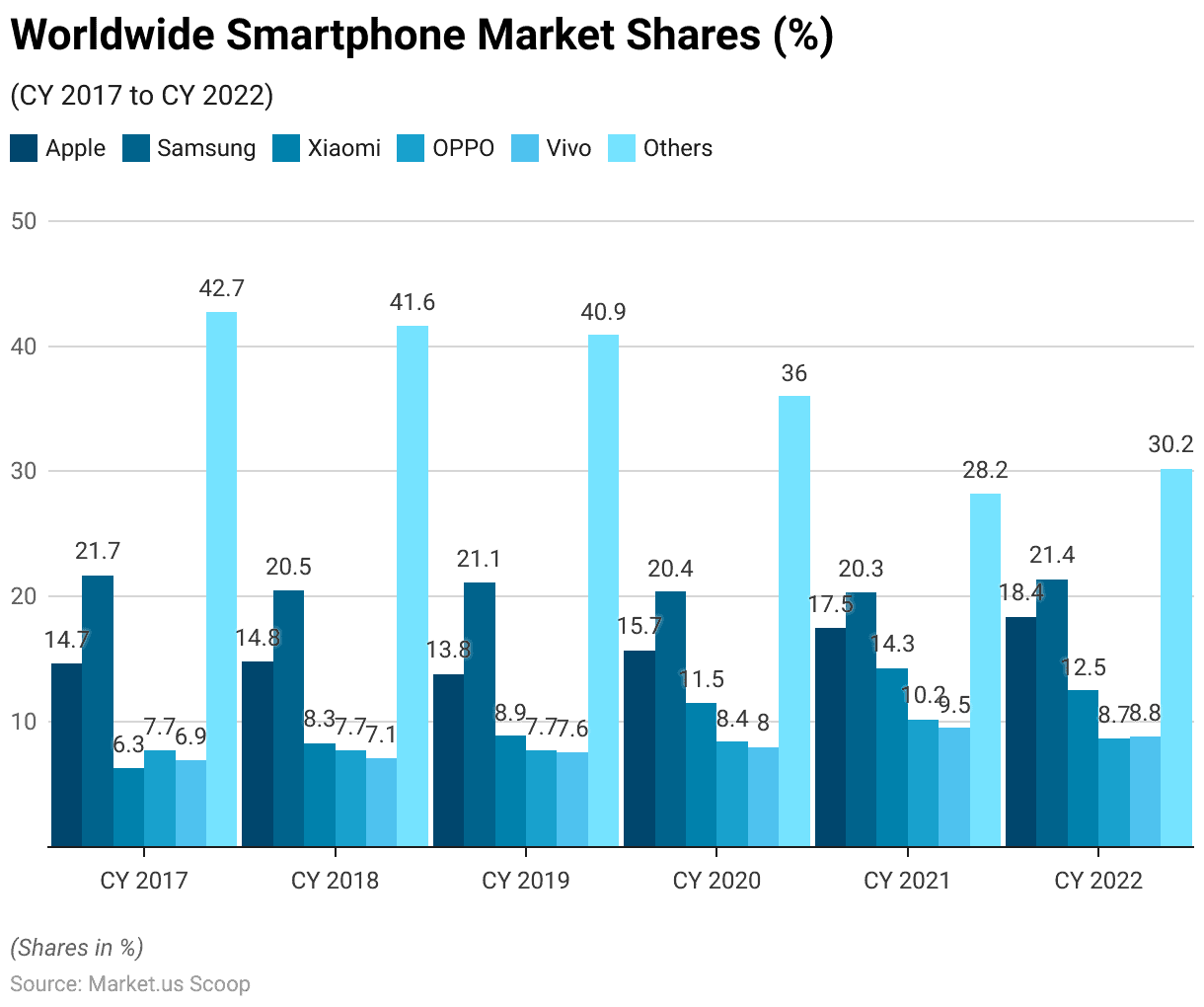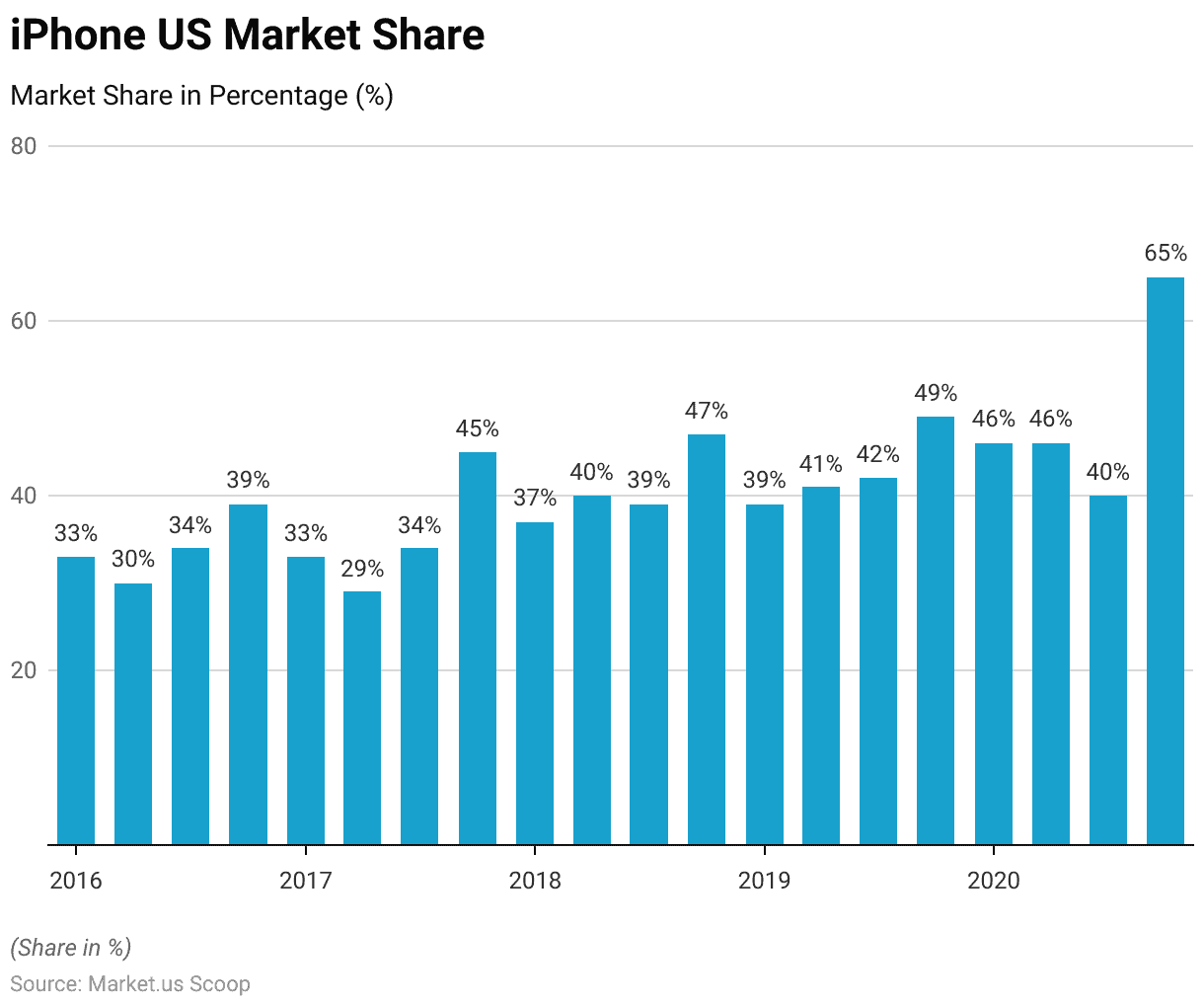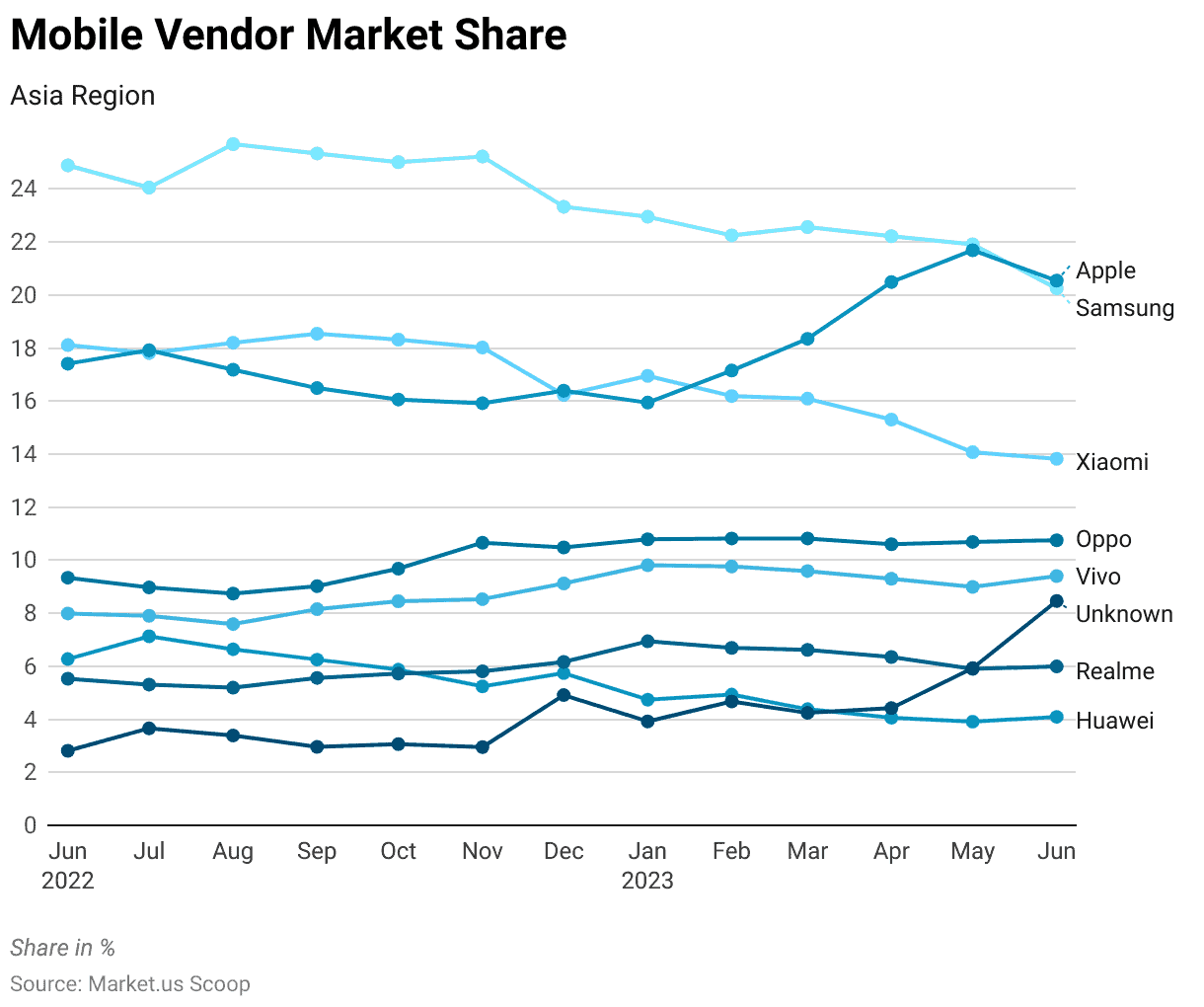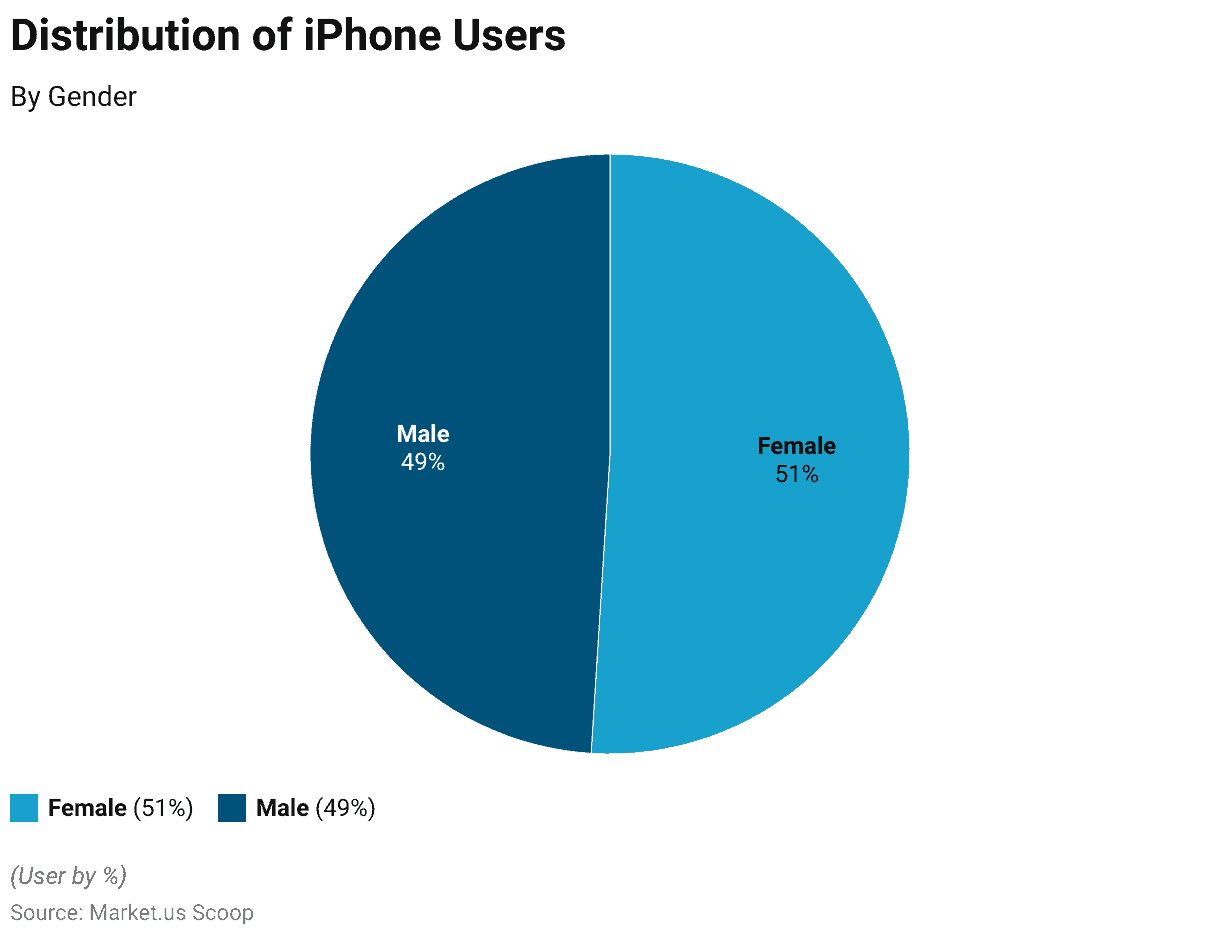Table of Contents
Introduction
According to iphone Users Statistics, The iPhone is a line of smartphones developed and manufactured by Apple Inc. It was first introduced to the world by Steve Jobs on January 9, 2007, and has since become one of the most iconic and popular mobile devices globally.
The iPhone runs on Apple’s iOS operating system, which is known for its user-friendly interface, security features, and smooth integration with other Apple products and services. Since its initial launch in 2007, it has revolutionized the way people communicate, access information, and engage with mobile technology. With each new iteration, the iPhone has continued to attract a large and loyal user base.
Editor’s Choice
- The number of iPhone users has surpassed 1 billion worldwide.
- Over 1.9 billion iPhones have been sold since the product’s inception.
- In the year 2020, Apple shipped a total of 206.1 million iPhones.
- iPhones hold a dominant market share of 65% in smartphone sales within the United States.
- Apple secured a remarkable presence in the smartphone market, with 6 out of the top 10 best-selling smartphone models in January 2021 being Apple-designed.
- Apple’s market share has shown a generally positive trend over the years, starting at 14.70% in CY 2017 and gradually increasing to 18.40% in CY 2022.
- The company experienced a dip in CY 2019 but recovered and maintained steady growth afterward. Apple’s growth indicates a sustained demand for its iPhones and successful product launches.
- Samsung, a major competitor of Apple, experienced some fluctuations in its market share during this period.
- It began at 21.70% in CY 2017, reached a low of 20.40% in CY 2020, and then increased to 21.40% in CY 2022.

- In 2016 and 2017, the share remained at 14%, suggesting a temporary plateau in growth. From 2018 to 2020, the market shares slightly declined to 13% in 2019 but rebounded to 15% in 2020, demonstrating resilience in the face of market fluctuations.
- The trend took an upward turn again in 2021, reaching 17%, and further climbed to 18% in 2022, highlighting the continued expansion and widespread adoption of smartphones as essential communication and computing devices in modern life.
- Between 2016 and 2020, the iPhone has maintained a strong and consistent presence in the North American smartphone market. In 2016, it held a market share of 43.50%, solidifying its position as a significant player in the region.
- However, in 2019, the iPhone experienced a notable surge, reaching a market share of 46.90%, showcasing its ability to capture a larger share of the market.
- This upward trend continued into 2020, when the iPhone’s market share rose further to 47.40%, solidifying its dominant position in North America.
- Throughout 2019, the iPhone maintained a strong presence in the US market, with its share ranging from 39% to 49%.
- The first quarter of 2020 recorded a 46% market share, and it remained consistent in the second quarter.
- However, in the third quarter, the market share dropped slightly to 40%. The final quarter of 2020 marked a significant surge, with the iPhone capturing a remarkable 65% of the US smartphone market.

- Market share for Apple iPhone remains high in Asia from June 2022 to June 2023.
- Samsung and Apple are the leading contenders in the market, with fluctuating shares throughout the period. In June 2022, Samsung held the highest market share at 24.89%, while Apple followed closely behind at 17.41%.

- Throughout 2021, Apple held a 23% share of the European market. Apple’s iPhone saw 11% year-over-year growth, allowing its market share to remain largely stable compared to 2020.
- Countries like the United Kingdom, Germany, France, and Italy have traditionally been strong markets for Apple, where the iPhone has performed well, driven by the brand’s premium image, customer loyalty, and strong ecosystem of products and services.
- In June 2021, the iPhone’s market share in China was at 21.95%, showing a strong presence in the market. However, it dipped slightly in the following months, reaching a low of 18.99% in October 2021.
Demographics of iPhone Users
Age Distribution
- As per a December 2021 poll of U.S. mobile users, around 58% of people using smartphones aged 18-34 used the iPhone as their primary device. On the other hand, users between the ages of 35-54 in the United States preferred using an Android phone, with 53% of this age group reporting using an Android-powered smartphone such as a Google or Samsung smartphone.
- Younger folks are the primary users of the iPhone. The 18-24 age group accounts for 22% of iPhone users, while the 25-34 and 35-44 age groups account for 27% and 23% of the iPhone user population, respectively. The iPad and iPhone have comparable age distributions, although the Mac is more popular among younger consumers.
Gender Distribution
- Globally, females account for 51% of iPhone users, while males account for 49%.
- In India, 75.3% of iPhone users are male while 24.7% are female.
Income Distribution
- iPhone users are more affluent: they outweigh +11% for more than $75,000, +30% for more than $100,000, and +48% for more than $125,000. Android users are substantially less rich, but for income categories above $50,000, they still have above-average means. They are overweight but only to a minor extent: +4% to +14%.
Education Level
- iPhone users are better educated: they are overweight +27% for graduate/PhD education and under-weight -33% for high school education. Android users exhibit the same pattern, albeit to a much lesser extent: +8% for graduate/PhD, -12% for high school.
- iPhone users were twice as likely to hold a master’s degree and 55% more likely to hold a four-year bachelor’s degree. It was discovered that only 28% of Android users had a university degree, while 72% had not completed a post-secondary education.
iPhone User Satisfaction and Loyalty
- According to 451 Research, a third-party research organization commissioned by Apple, the iPhone 14 has a 99% customer satisfaction rating.
- As of July 6, 2023, 6% of people on Google give the various iPhone 14 models 1 star. That extraordinarily generous scale translates to a satisfaction score of 94%, which is still less than the 99% claimed by Apple.
Preferred iPhones
- As of the 2021 data, the Apple iPhone 12 holds the highest market share among the listed smartphone models, capturing 6% of the market.
- Following closely behind, the Apple iPhone 12 Pro Max and iPhone 12 Pro hold 5% and 4% market share, respectively.

- The iPhone 13 was the best-selling smartphone in 2022, accounting for 28% of total iPhone sales. It was the best-selling smartphone in major markets like as China, the United States, the United Kingdom, Germany, and France.
- Furthermore, from September 2021 to August 2022, the iPhone 13 was the number one smartphone each month.


